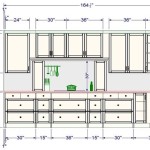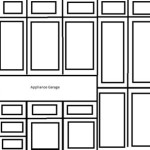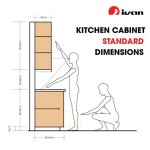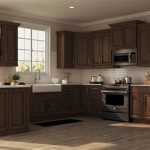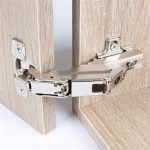Kitchen Cabinet Wraps: A Comprehensive Guide
Kitchen cabinet wraps offer a cost-effective and efficient way to transform the appearance of a kitchen without the expense and disruption of a full remodel. These versatile coverings adhere to existing cabinet surfaces, providing a fresh, updated look in a variety of colors, patterns, and textures.
Several types of kitchen cabinet wraps are available on the market, each with its own set of characteristics and benefits. Vinyl wraps are a popular choice due to their durability, affordability, and wide range of design options. They are relatively easy to install and maintain, making them suitable for DIY projects. Thermofoil wraps, made from a thin layer of vinyl laminated to a heat-sensitive adhesive backing, offer a smooth, seamless finish. They are particularly resistant to moisture and stains, but can be more challenging to install than vinyl wraps. Another option is wood veneer wraps, which provide the authentic look and feel of real wood at a fraction of the cost. These wraps consist of thin layers of wood adhered to a flexible backing, allowing them to conform to the contours of cabinet doors and drawers.
The installation process for kitchen cabinet wraps varies depending on the type of wrap selected. Generally, the process involves thoroughly cleaning the cabinet surfaces, measuring and cutting the wrap to size, and carefully applying it to the cabinets while smoothing out any air bubbles or wrinkles. Specialized tools, such as a heat gun for thermofoil wraps or a veneer press for wood veneer wraps, may be required for certain types of installations. Precise measurements and careful application are crucial for achieving a professional-looking finish.
Choosing the right kitchen cabinet wrap involves considering several factors. The existing cabinet material plays a role in determining the best type of wrap. For example, smooth surfaces are generally more suitable for vinyl and thermofoil wraps, while wood veneer wraps can be applied to various surfaces. The desired aesthetic is another important consideration. Vinyl wraps offer the widest variety of colors and patterns, while wood veneer wraps provide a more natural, textured look. Budget is also a factor, as the cost of different wrap materials can vary significantly.
Proper maintenance is essential for prolonging the lifespan of kitchen cabinet wraps. Regular cleaning with a mild soap and water solution is typically sufficient to remove dirt and grime. Abrasive cleaners and harsh chemicals should be avoided, as they can damage the wrap's surface. Spills should be wiped up promptly to prevent staining. With proper care, kitchen cabinet wraps can last for several years, providing a durable and attractive update to kitchen cabinetry.
Compared to other cabinet refacing options, kitchen cabinet wraps offer distinct advantages. They are significantly less expensive than replacing cabinets entirely and require less time and effort than traditional refacing methods. Cabinet wraps also offer a greater degree of design flexibility, with a vast array of colors, patterns, and textures available. The installation process is generally less disruptive than other refacing methods, with minimal dust and debris generated.
Several factors contribute to the overall cost of using kitchen cabinet wraps. The type of wrap material selected is a major determinant, with higher-quality materials typically commanding a higher price. The size of the kitchen and the number of cabinets being wrapped also affect the total cost. Professional installation can add to the expense, although many homeowners choose to install the wraps themselves to save money. Obtaining accurate measurements and ensuring proper surface preparation can help minimize material waste and reduce overall costs.
When selecting kitchen cabinet wraps, it is important to choose high-quality materials that are durable and easy to maintain. Reputable manufacturers offer wraps that are resistant to fading, peeling, and warping. Reading product reviews and comparing different brands can help consumers make informed decisions. Considering the specific needs of the kitchen environment, such as exposure to moisture and heat, is also essential when choosing a suitable wrap material.
Kitchen cabinet wraps offer a transformative solution for updating kitchen cabinetry without undertaking a costly and time-consuming renovation. By carefully considering factors such as material type, design aesthetics, and budget, homeowners can achieve a refreshed and revitalized kitchen space with minimal disruption and expense.
Exploring different design options and seeking inspiration from online resources and home improvement magazines can help homeowners envision the desired look for their kitchen. Consulting with a professional installer or designer can provide valuable insights and guidance throughout the selection and installation process. Careful planning and attention to detail are key to achieving a successful and satisfying kitchen cabinet wrap project.

Everything You Need To Know About Vinyl Wrap Kitchen Cabinet Doors The Door Company

Theril Cabinets Hanover

Vinyl Wrap For Kitchen Cupboard Doors Restoration

Wrap My Kitchen Resurface Your Cabinet And Doors

Wrap My Kitchen Home Of Appliance Wrapping South

What Types Of Laminates Are There To Wrap Cabinet Boxes Redo

How Much Does Kitchen Door Wrapping Cost In 2024 Checkatrade

Kitchen Totally Wrapped Interior Wrapping Service Dubai

50 Best Kitchen Wrap Ideas In 2024 Transformation Vinyl

Spray Paint Or Vinyl Wrap For Kitchen Cupboards Upvc Painting
Related Posts

